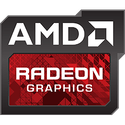
Intel Arc Alchemist GPUs Get Vulkan 1.3 Compatibility
A part of the process of building a graphics card is designing compatibility to execute the latest graphics APIs like DirectX, OpenGL, and Vulkan. Today, we have confirmation that Intel's Arc Alchemist discrete graphics cards will be compatible with Vulkan's latest iteration - version 1.3. In January, Khronos, the team behind Vulkan API, released their regular two-year update to the standard. Graphics card vendors like NVIDIA and AMD announced support immediately with their drivers. Today, the Khronos website officially lists Intel Arc Alchemist mobile graphics cards as compatible with Vulkan 1.3 with Intel Arc A770M, A730M, A550M, A370M, and A350M GPUs.
At the time of writing, there is no official announcement for the desktop cards yet. However, given that the mobile SKUs are supporting the latest standard, it is extremely likely that the desktop variants will also carry the same level of support.
At the time of writing, there is no official announcement for the desktop cards yet. However, given that the mobile SKUs are supporting the latest standard, it is extremely likely that the desktop variants will also carry the same level of support.



































